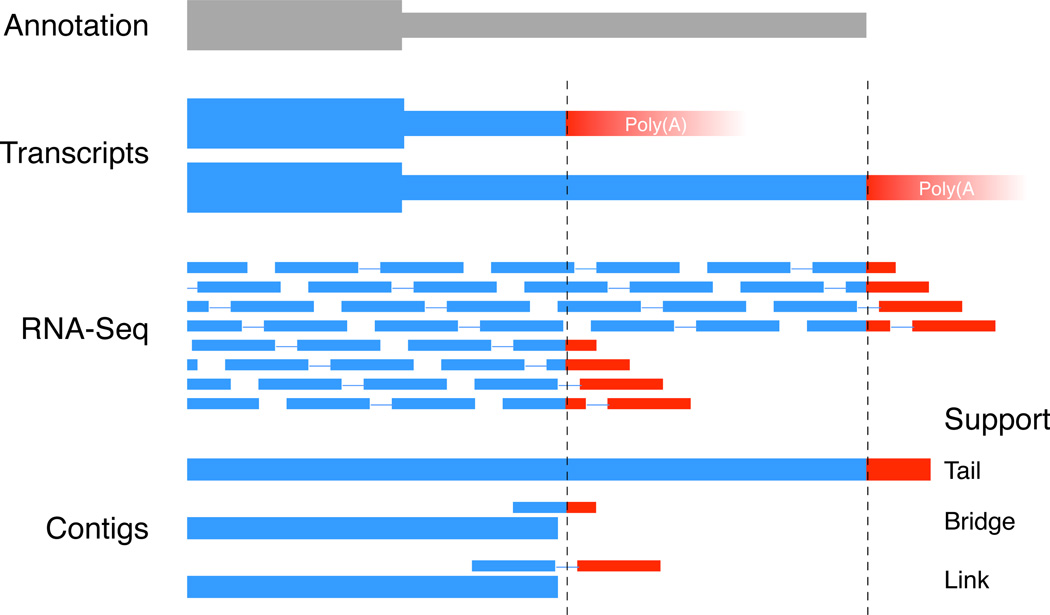Fig. 2.
Three types of support for detecting cleavage sites using RNA-seq data. The gene annotation (grey) indicates a single 3’ UTR isoform, while the sample expresses two APA (red) variants. RNA-seq data capture the presence of these two alternatives with reads that end in poly(A) sequence (red). Contigs with supporting evidence have either a poly(A) “tail”, an overhanging read that is “bridge” to a poly(A) sequence, or a read that has a “link” to a pair with poly(A) sequence.

